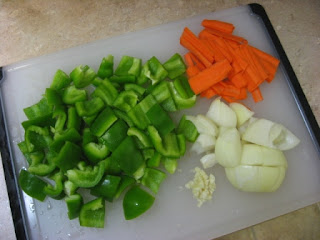Good things about curry are that it's super easy to make and you could add anything you like to curry. You could add tomato and eggplant as summer curry, or shrimp and scallop as seafood curry, or chicken, pork, mushroom, peas, okra...anything! One time I added a can of tuna because I wanted my husband to eat tuna to take in more protein. He likes curry, but he doesn't like tuna. Of course, I also added other vegetables such as potato and carrots. I was so glad he didn't notice there was tuna in curry. So, you could try to add any vegetables that your spouse or kids don't like if you chop them into small pieces : ). We don't want to force them, but we want them to enjoy meals and be healthier, right? In fact, according to researches curry is known to have many
health benefits. It has many spices that help liver function, antioxidants, appetite improvement, diet, etc.. We should all eat it more often.
First of all, you could get a package of curry at a
Japanese supermarket or online. You will find many varieties of curry. Basically there are 4 levels of spiciness; Mild, Medium hot, Hot, and Extra Hot. Although the Extra Hot is not common to find. If you have never tried any of these before, I would suggest to try no hotter than Medium hot until you know which level of spice you prefer. There are several brands of curry. You are most likely to find "S&B" and "House". They are both good, but I like the S&B brand. They are originally a company for spices and their curry has deep and rich spices. If you mix curry with other brands, it is very good as well. When you get a package, it comes with 2 curry roux, (containers that hold the curry). I used one of them for the following recipe.
Serve 3 to 4
Total time: about 45 min
- 2 pieces (or 1/2 lbs) of boneless skinless chicken thigh
- 1 onion
- 1 carrot
- 1 and 1/3 cup of broccoli (I use the stem as well after peeling the hard skin)
- 1 garlic cloves, minced
- 3 cups (750ml) of water
- 1/4 lb (1/2 package) of Japanese curry
 roux
roux
- Optional -
- 1 potato
1. Cut vegetables into bite-size pieces.
2. In a large deep skillet, cook and stir garlic in hot oil over medium heat for 20 seconds. Add onion and cook until tender. (You could also cook minced onion until light brown. Some people do this for about an hour! This will give you a sweet and rich flavor in the curry.)
3. Add chicken and cook until it is no longer pink.
4. Add the vegetables into a skillet and stir it well. (I usually start adding the big chunks of vegetables first, such as potato and carrots that need to be cooked longer. Then add
the other vegetables which will be cooked faster, such as the floret of broccoli or the tomato.)
5. Add water into a skillet and bring it to a boil.
6. Turn down the heat to a medium-low heat. Skim off the scum while simmering the ingredients for 20 minutes.
7. Turn off the heat. Add the curry roux and dissolve it completely.
8. Turn on the heat again with a low heat. Simmer for at least 5 minutes and mix it sometimes so it won't get burnt at the bottom.
9. Done! Serve it with rice, bread, or naan bread.
If you add a potato, it tends to spoil rapidly in a hot weather like summer. I'd recommend to save leftovers in a container, such as a Tupperware, and store it in the refrigerator.
It is so good as well if you add cheese as a topping on the curry. We also serve curry over Udon noodles. They are really good!






































